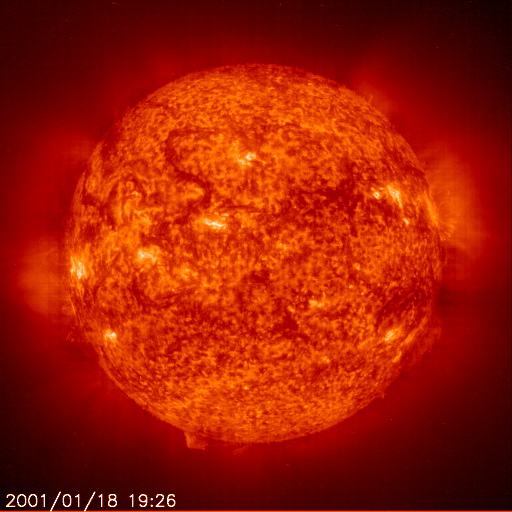An Alive Star
A losing fight with Gravity
|
Here we examine the dependence of a stars life time on its mass. Counter intuitively the larger a star is the shorter its life. The smallest cloud of gas and dust that can form a star, that is create nuclear fusion, is about one tenth the size of our sun and is called a red dwarf. It has just barely enough mass to reach the needed temperature of ten million degrees C so nuclear fusion happens very slowly. This conserves the stars energy and it is able to live for an astounding trillion years. Our universe is only 15 billion years old so no red dwarf has even come close to dieing yet. The second case is a star the size of our own sun which is used as a standard as might be evident from previous mention. Because the mass is bigger more heating occurs in the core thus speeding up the nuclear fusion. The surface temperatures get moderately hot, relatively, and glow white. After about ten billion years all the hydrogen will be converted to helium and it will die as a white dwarf, which we will get to shortly. The third case is much more interesting. If a star forms that is much larger than the sun, the most massive being 100 times the mass, its core reaches incredibly high temperatures and it burns its fuel at an incredibly fast rate, over a million times the rate of our own sun. So even though it has a hundred times the mass, it burns it all up in about a million years which cosmically is hardly anytime at all (Brusca, 2004). |
|
